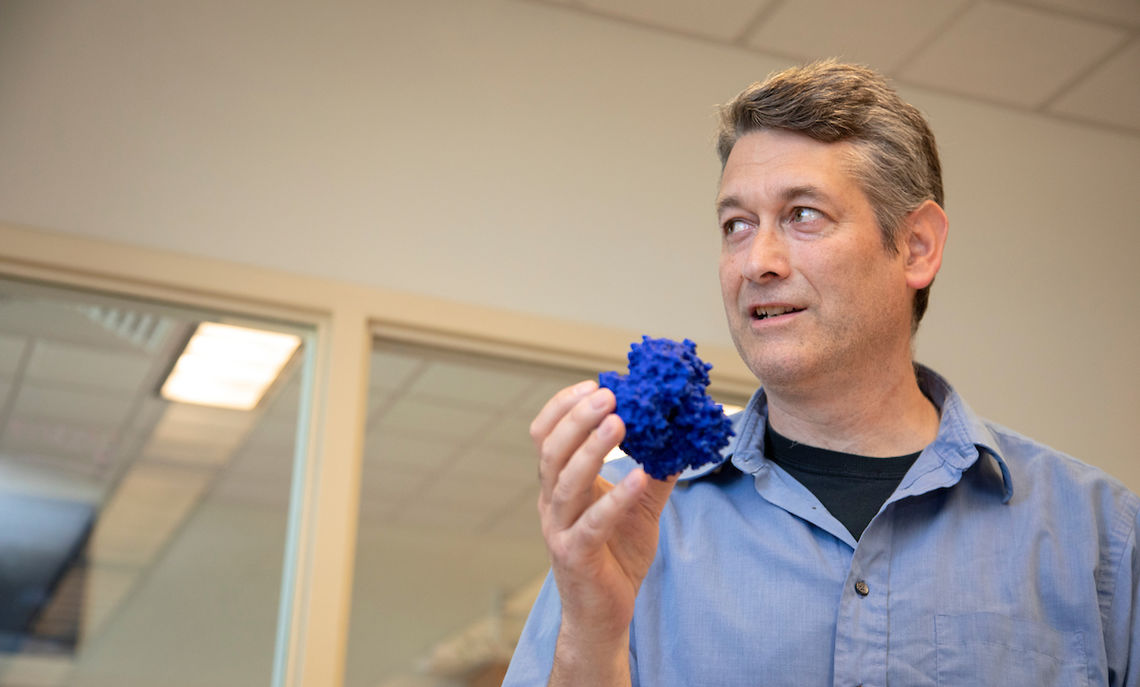F&M Stories
Biology and Chemistry Professors Collaborate on Sea Coral Research
Professors in biology and chemistry at Franklin & Marshall College have teamed up to study reef-building coral and understand the deadly effects of coral bleaching.
"When coral are stressed out, they turn white, and if the stress is strong enough the coral will die," Dr. E. Paul & Frances H. Reiff Professor of Biology Peter Fields said. "Over the last couple of decades we've lost somewhere between 15 and 20 percent of all the reef-building coral on the planet due to the increases in stresses."
The world's oceans rely on reef-building corals as underwater ecosystems for plants and animals to inhabit. Corals are animals, but inside the coral live algae that photosynthesize and provide food on which the coral is dependent, Fields said.
"The most significant stressor for coral is heat, and increasing sea-surface temperatures are leading to more rapid, widespread bleaching events," Fields said.
The bleaching detrimentally disrupts the coral-algae symbiosis—when coral bleach they kick out the algae, their food provider, because algae cannot withstand the increased heat.
"The reason the bleaching occurs is because the algae themselves starts to fail on a biochemical level and the corals have no choice but to kick them out because the algae start producing toxins," Fields said.
As a biochemist, Fields studies the effect of temperature on biochemical processes, particularly the function of proteins. He began to examine the problem of coral bleaching in the context of enzymes, trying to determine at what point algae start to fail when under increased heat.
That's when he turned to F&M Associate Professor of Chemistry Gabriel Brandt.
"I needed a better way to purify my proteins, and that is something Gabe is expert at," Fields said. "Up to that point, I don't think Gabe gave much thought to corals. But the idea intrigued him and he began working to produce a 3D structure of a coral protein."
The collaboration between the two labs produced the first atomic structure of a protein from the coral genus Acropora, Brandt said.
"These corals are some of the most abundant in the earth's oceans and play a major role in establishing the stony basal structure of reefs," he said.
Their collaboration worked, Brandt said, because "We're very much interested in the pieces that make up an organism, which is not the most obvious perspective to have; but we're both interested in the atomic structure of molecules."
Brandt showed a blue-colored model of a stony coral protein, made on a campus 3D printer, that he said few humans have ever seen.
"We try to induce proteins to crystallize, to get a 3D view," he said. "Having the structure is key to learning how an actual protein works." Brandt and Fields hope a better understanding of the structure and function of coral and algal proteins will help to unravel the mystery of coral bleaching.
Related Articles
November 21, 2025
What is Extended Reality–and Why are F&M Students Researching It?
Learning by doing is in our DNA as Diplomats. For Sujal Shah ’27 and Kha Nguyen ’28, this meant collaborating with their computer science professor to research how extended reality can be used for safer, more effective employee training.
November 13, 2025
Trailblazing Research Examines Cigarette Label Alternatives
Three F&M students helped conduct a groundbreaking pilot study in Lancaster this summer, assisting Professor Hollie Tripp with tobacco regulatory research. It's the first F&M instance of biospecimen collection from non-campus participants.
October 23, 2025
Get to Know F&M's New Faculty
This fall, five new professors joined the Franklin & Marshall faculty—a vibrant community of scholars who shape the College’s distinctive academic experience. Their research interests range from parasitology to documentary film, from diplomatic networks in the Middle East to algorithmic surveillance online. Read on to get to know these new members of our campus community and hear what they had to say about the F&M experience, life in Lancaster, and more.

